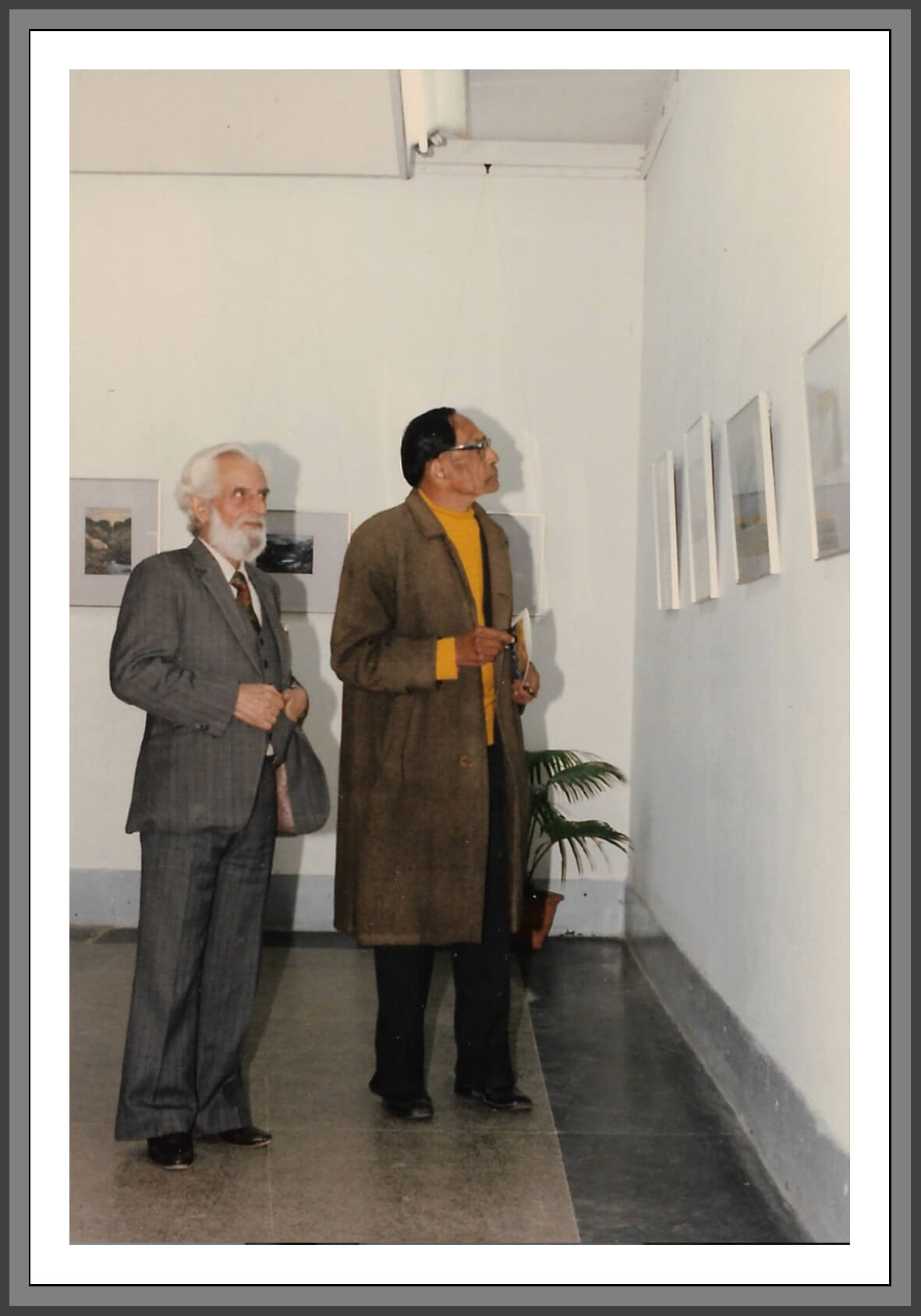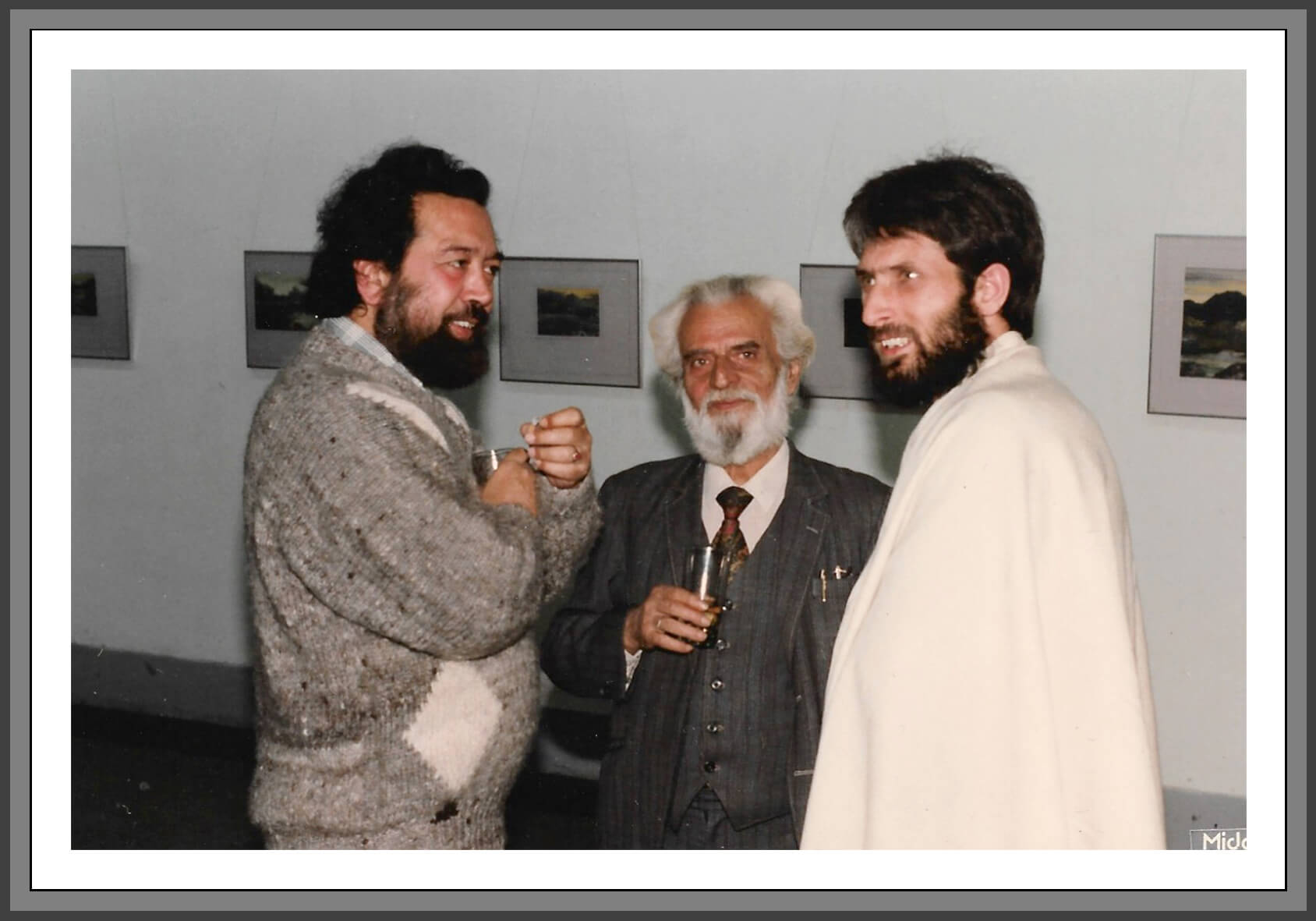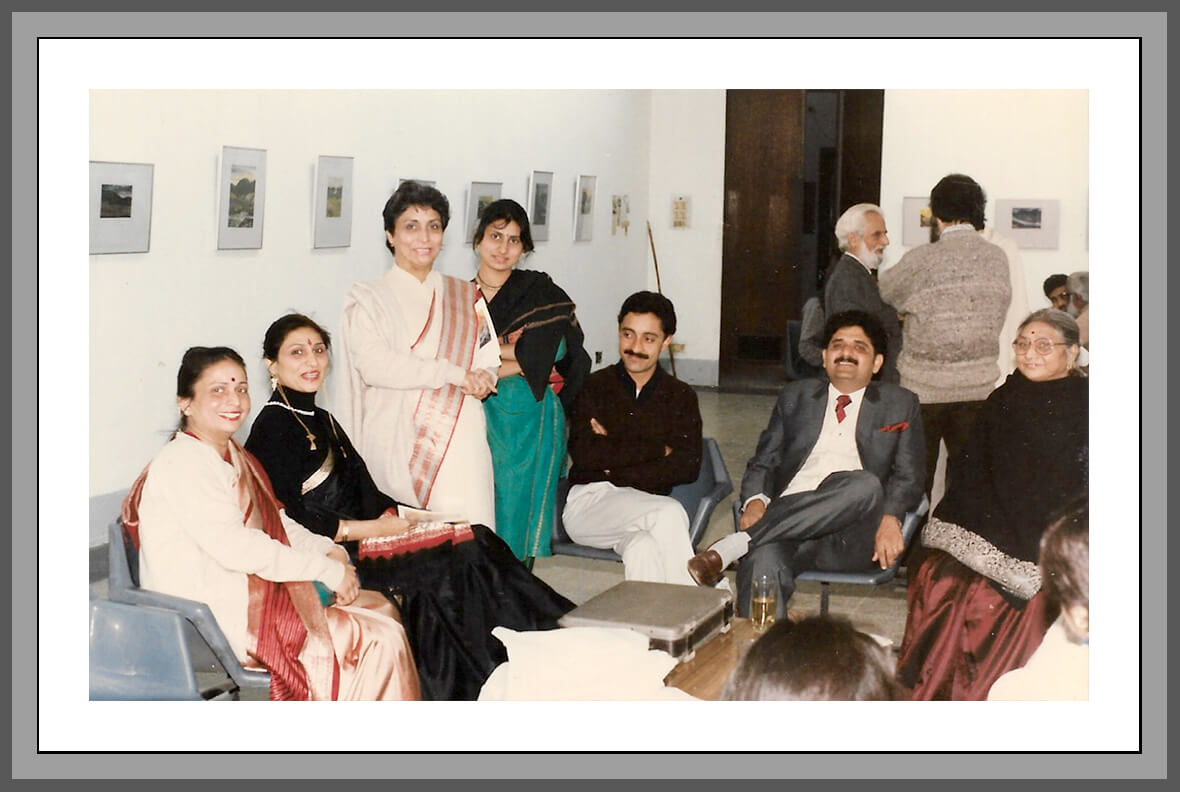Himalayas: A Return to Watercolour
New Delhi, 1991
After nearly three decades, Manohar Kaul returned to the watercolour medium with renewed intimacy and vision. This exhibition offered contemplative views of the Himalayas—rhythmic, luminous, and deeply internalised. The works revealed a mature painter’s instinct for form and silence, transcribing the great mountains not as spectacle, but as spiritual memory.
Catalogue








Press Reviews

THE TIMES OF INDIA , New Delhi, January 29, 1991
COMMUNING WITH DIVINITY
By Keshav Malik
Manohar Kaul,
AIFACS
A pity that the painter had not
put up work in this medium in
earlier shows! They are really ex-
quisite as mountain studies: the
man has expended all his long
lasting knowledge of the moun-
tains in these works. Many of these
have been done from memory, but
here memory is a better guide to
creation than on- the-spot com-
positions. For the painter 'to com-
mune with nature is to commune
with divinity'. Oh, definitely!

National Herald New Delhi, February 3, 1991
An Artist’s Eye-View of the Himalayas
By Vijay Bhushan
If Nicholas Roerich observed the Himalayas through Russian eyes, Manohar Kaul has painted the ‘Great Mountains’ with a distinctly Indian vision.
Only now, the miniaturised forms of the Himalayas adorn paper, whereas earlier the artist had captured them on canvas.
In Kaul’s own words:
“I have reverted to the watercolour medium, in a small format, after a lapse of nearly three decades. I found this medium as enjoyable as my initial forays into the creative field.”
Kaul’s impressions of the Himalayas, on view at the AIFACS Gallery from January 22 to February 3, reveal a deeply immersive engagement with nature. His watercolours capture the rhythms of nature in expansive yet intimate ways.
The interplay of contrast and fusion creates a symphony of its own.
“My main emphasis has always been to highlight the sublime elements inherent in the Himalayan ranges — in all their glory — the unique textural varieties of rock formations coming alive in celestial light. I transcribed that same divinity onto canvas,” says Kaul.
Not only an artist, Manohar Kaul is also a committed art analyst. He edits and produces Kala Darshan, a magazine dedicated to the visual arts.
Born in 1925 in Srinagar, Kaul is the author of Trends in Indian Painting — Ancient, Medieval, Modern. He is also a recipient of the Kala Vibhushan Award from AIFACS.

The Hindustan Times, New Delhi, January 27, 1991
Watercolours by Manohar Kaul
By Krishna Chaitanya
While some of the boys in the Indian Information Service managed splendidly without being able to write in any language, Manohar Kaul, now past sixty-five, has shown that he can paint as well as write.
For several years, he has been presenting us with large-format oil landscapes. This time, at AIFACS, he offers a series of small-format watercolours — impressions of the hills and valleys of the Himalayan region.
The works seem to fall into two distinct categories:
The first category is carefully crafted, where the textures of rocks, weathered by the sun and rain of a million years, are captured through delicate brushwork — colour subtly lifted and pulled back to reveal the form beneath.
The second group, to which I personally respond more, features a deliquescence of physical form into resplendent colour:
A single tree, holding all the gold of spring, standing in a green meadow.
An autumnal tree, blazing at the edge of a blue stream.
In these works, colour has a freshness so vivid, it seems that your hand would feel wet if you touched the surface of the water.

Evening News Monday, January 21, 1991
His colours glow without jarring
By R. S. Yadav
Landscape painting has a long and glorious tradition, both in the East and the West. In India, the Bengal School became particularly known for its landscapes — though mostly in watercolour. Elsewhere, no specific schools emerged, but landscape painting still took deep and lasting root, especially among artists shaped by the modernist trend.
There are few painters of merit who have not at some point engaged with landscape, though there is no need for name-dropping. A good landscape, after all, should speak for itself — and recommend the name of its creator automatically.
This is certainly the case with Manohar Kaul.
Those who have encountered his landscapes — in watercolour or oil, during solo or group exhibitions — often find themselves suddenly gripped by the work. His paintings don’t just communicate; they enchant. Viewers cannot pass them by without stopping to absorb their presence.
As one of the leading landscape painters, Manohar Kaul has remained steadfast in his first love — and has created memorable works that continue to be admired. He has stayed rooted in the best traditions of landscape painting, approaching the genre with deep feeling and artistic subtlety. Knowing his tools intimately, he has not only extracted the most from the medium — he has, rather, given his most to it.
His artistic involvement and technical perfection have reached a level of maturity that demands serious attention. His landscapes are not only poetic in nature, but also possess a quality akin to Western symphony — where the harmony of notes arises from a delicate balance of each element, both with one another and with the whole.
There is, therefore, both vibrancy and a brooding quality in his landscapes.
Kaul’s colours glow, but do not glare. His lines divide, yet never fail to integrate — each painting becomes a carefully interacting composition. And finally, his grasp of detail is subtle, nuanced, and deeply appreciable.
Exhibition Highlights
Archival photographs from the 1991 exhibition. Manohar Kaul returned to the watercolour medium with renewed intimacy and vision after about three decades.




